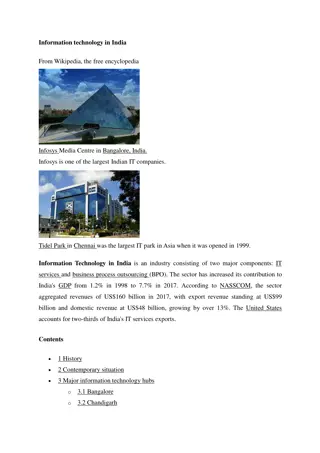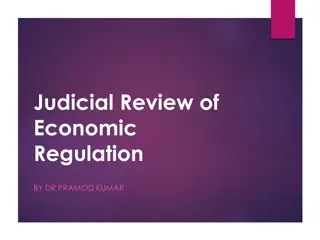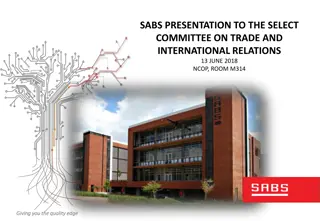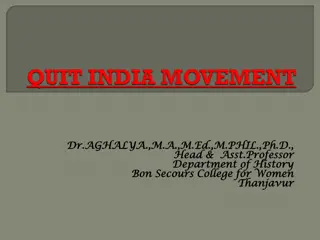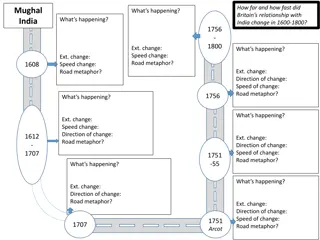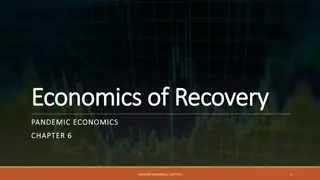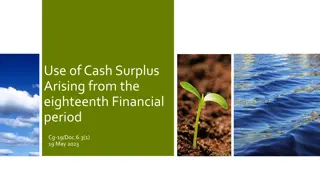Economic Conditions During the Period of Nayaks in South India
The economic condition during the Nayaks period in South India was heavily influenced by agriculture, trade, and industry. Agriculture was the main occupation, dependent on monsoons for cultivation. The Cavuery River played a significant role in irrigation. Famine led to price hikes in food grains. Various taxes, including land tax and property tax, were collected. Festivals and temples also imposed special taxes. Overall, the economy was closely tied to agricultural productivity and trade dynamics.
Download Presentation

Please find below an Image/Link to download the presentation.
The content on the website is provided AS IS for your information and personal use only. It may not be sold, licensed, or shared on other websites without obtaining consent from the author. Download presentation by click this link. If you encounter any issues during the download, it is possible that the publisher has removed the file from their server.
E N D
Presentation Transcript
During the period of Nayaks the economic condition was determined by the nature of agriculture industry and internal and external trade. The traditional system of agriculture existed in the Nayaks periods.
Agriculture was the main occupation of the people. People surely depended on the monsoons for cultivation. Generally the south west. South east and northeast monsoons gave fertility to the soil. In the fertile areas paddy was cultivated. To protect the people from flood, dams were constructed across the rivers.
The river water was brought for irrigation through channels. The Cavuery river is Tamilnadu played a major role in determining the economic condition of the people.
Due to the betrayal of monsoons, there were great famines during the region of Nayaks. Due to the shortage of food, the prices of the grains increased tremendously. Particularly due to the famine in 1709, the prices of food grains raised to its zenith. It was recorded that prior to the famine eight maraikal paddy was sold for one panam. After the famine one maraikal rice was sold for four panams.
In administration of visvanathar. He and his successor follwed manikaram (or) Ambalakaram collected the taxes to government treasury through the head of Makanam. During the times of Nayaks various kinds of taxes were collected from the people. 1529, Madurai came under the direct
Among them Land tax. Property tax. Trade tax. Industrial tax.
Mainly lands were divided into fertile and unfertile lands. Records mentioned that taxes were fixed based on the nature of the land. Taxes were also collected from the domesticated animals such as cow, bull, lamb etc., Special taxes were collected for the maintenance of army. It was called Padaikodai .
The people in the society were more concerned about the festivals in the temples. So, festivals and temples collected special taxes from the people. This tax was called Pidarivari . At the time of marriage, the parties were forced to remit taxes to the government. The traditional taxes such as irrigation tax, boat tax, Padikaval, Kalappaivari, Nattukanakkuvari etc., The government also collected taxes from forests, courts, pearl fishing etc.,
In the Nayaks period importance to industrial growth. People in the society followed certain traditional industries. Industires like black smithy, carpentry, spinning, weaving, pottery making, oil manufacturing, garment making, fishcatching, hair dressing etc.,
Various taxes collected from the industry among them. Tharikadamai, Chekkudamai, Arisikannam, Ponvari, Chemponvari, Meychelvari, Pattucedainoolayam etc., The state also collected professional tax. It was collected from judges, village heads and high officials of the states.
During the period of Nayaks both internal and external trade. They important foreign goods and sold in the local markets. Tax was not collected from them. So, government concentrated more on collecting taxes from local markets(Angadies). The merchant stores were located near at markets. The traders were settled in separate places.
Robbery was common in these days. Highway robbery in the period. Roads available in the country were utilized for the transports of commodities. The frequent wars and famines disturbed the steady growth of trade.







 undefined
undefined









